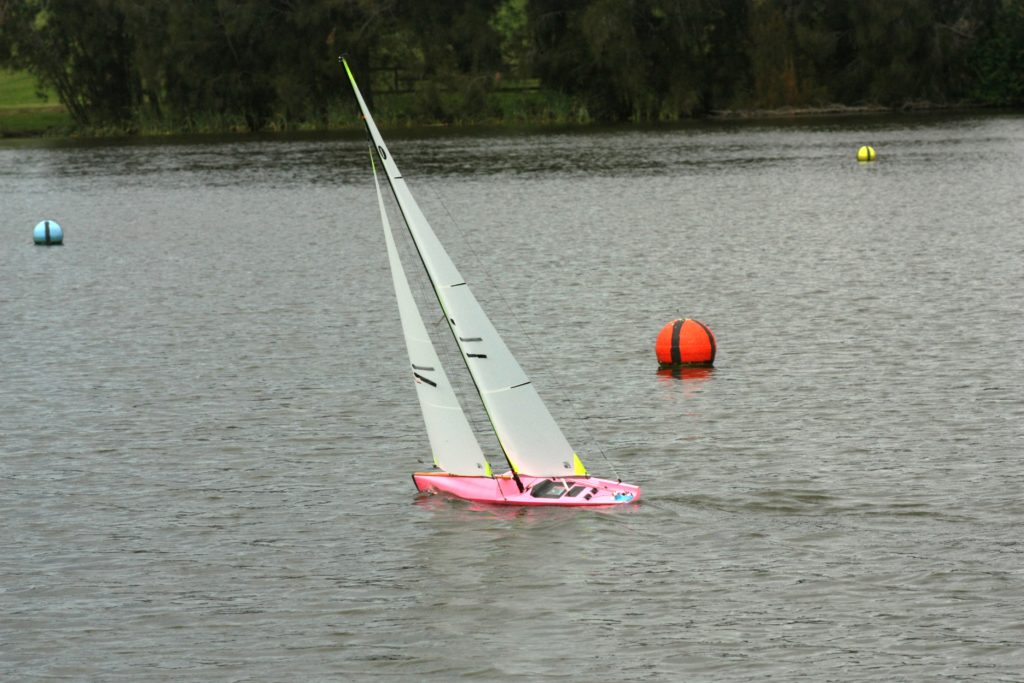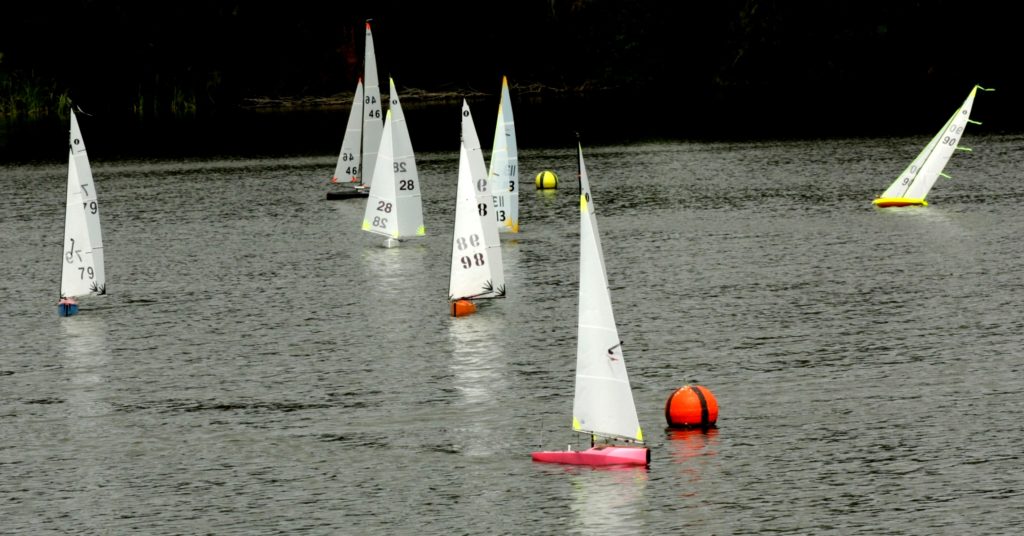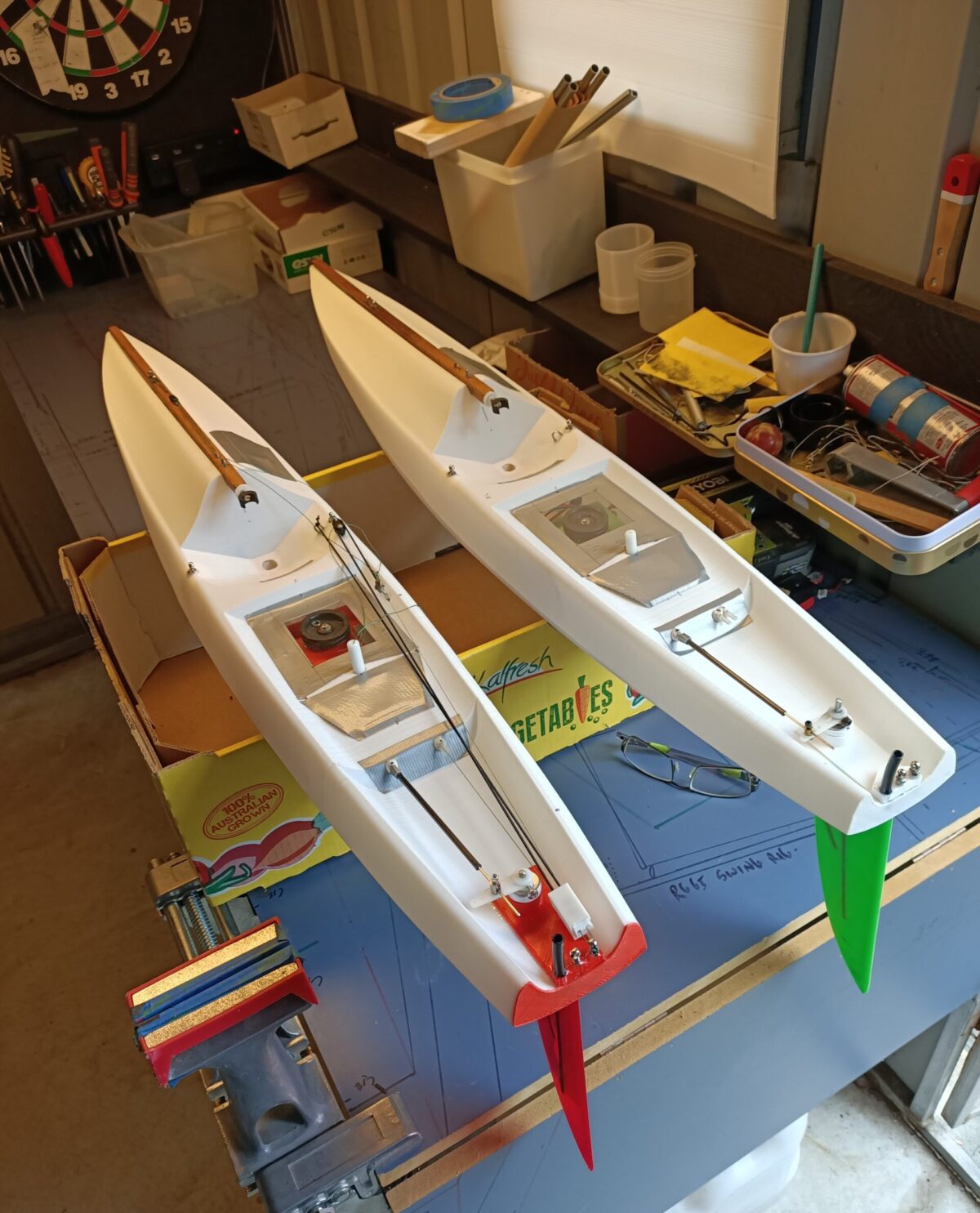The IOM 3D Skiff
Skiff Prototype V1
Yes, this is another 3D printed IOM design.
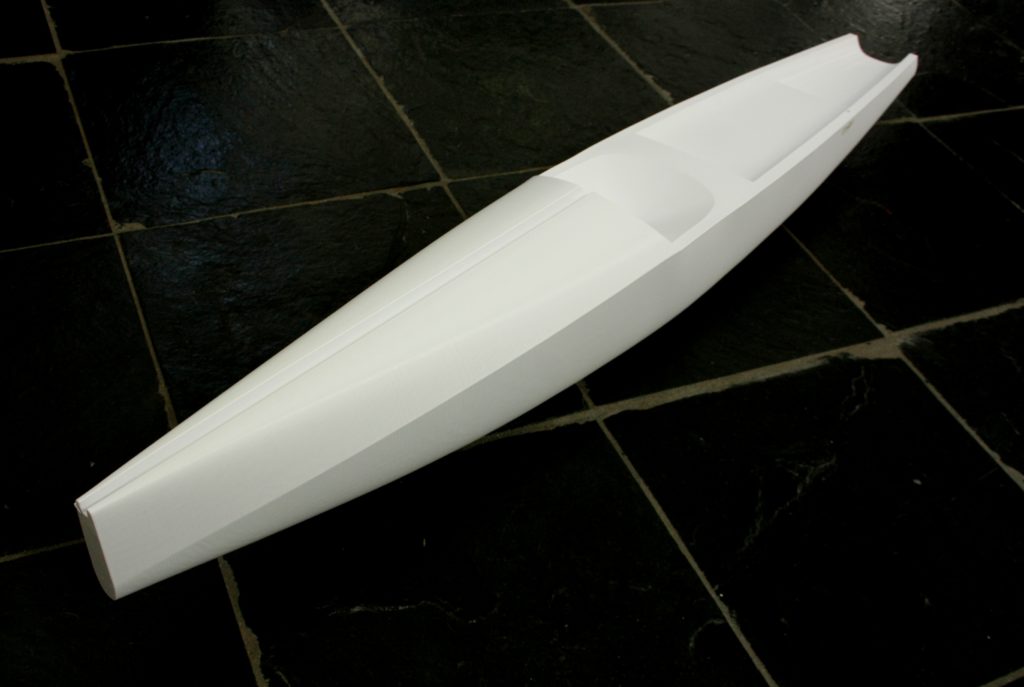
The origin is based on a fast big boat design from Europe. Bill and I got talking about the prominent fore deck edge running down towards the water line at the bow. It seemed like a good idea for a number of reasons. The most obvious was it kept bouyancy upfront below the waterline and also allowed us to reintroduce the “submarine” shaped top deck to help spill water during the ducking periods when it gets gusty going down wind.
So we married the fore deck down slope with a rather different hull shape for an IOM. I had just finished and sailed the rather nicely balanced 10R Skiff design from Bill, so it seemed reasonable that we put a similar fresh shape under this new deck. It has a strong U shape cross section and a flat V shape longitudinally.
With the first outing, it was obvious from the start in a modest 5-10 km/h breeze that I wasn’t going to have any trouble keeping up with the best in the club. As I got used to it through the day, I managed to get it to do better and better. Won a bunch of races.
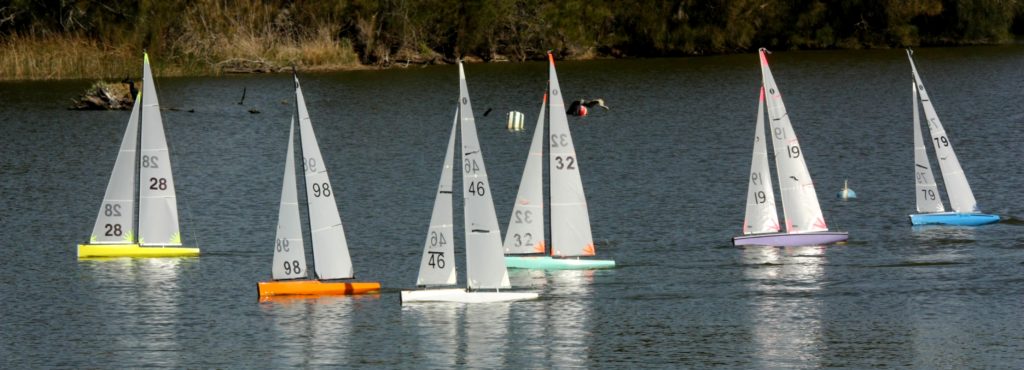
Again, the pictures tell the story. The internal design is the same as the Sabre series with the waterproof winch and servo boxes plus the very effective and waterproof exit slots for the sheeting and rudder rod at the rear,
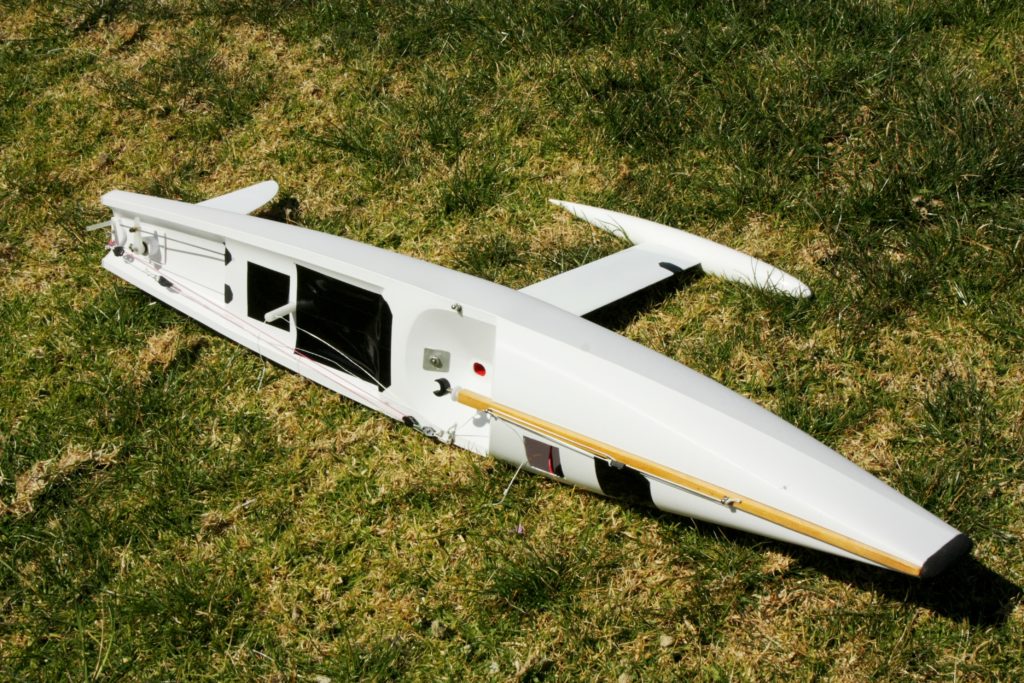
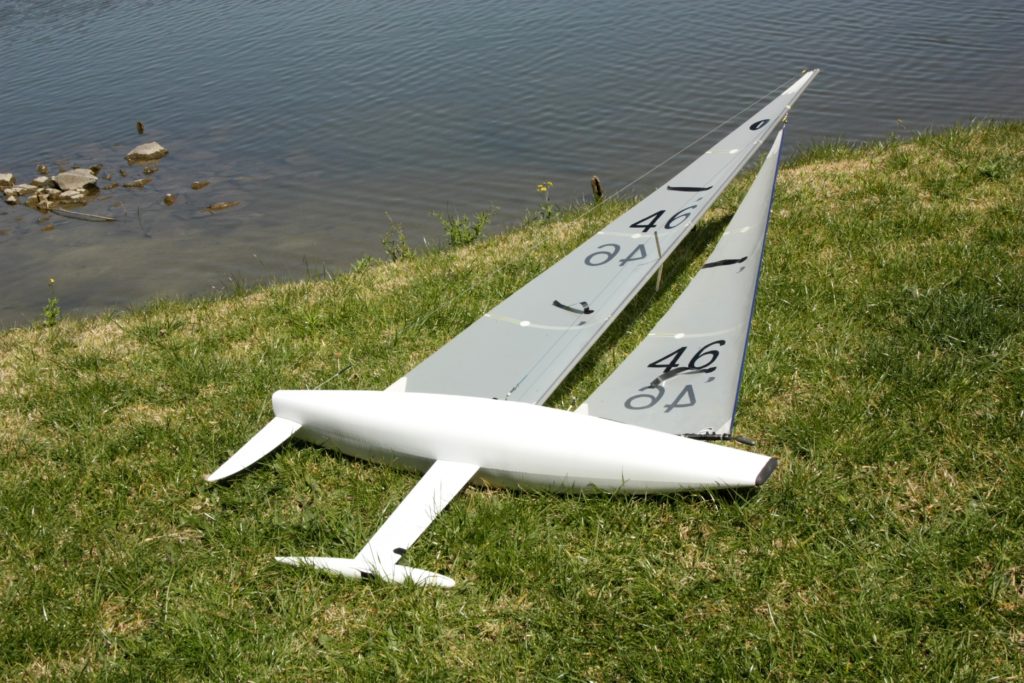
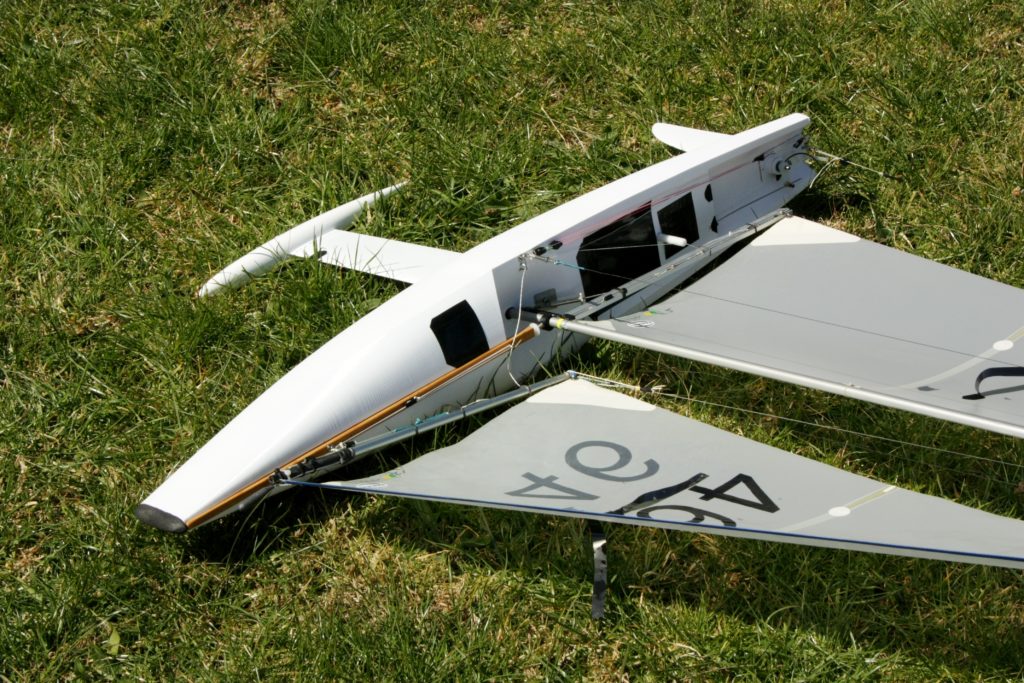
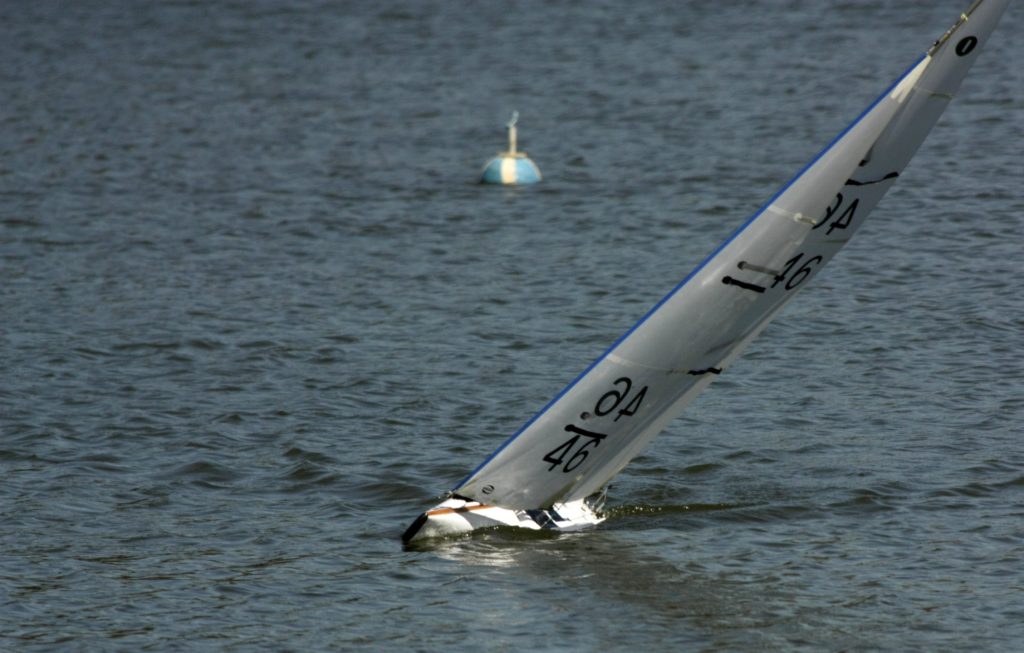
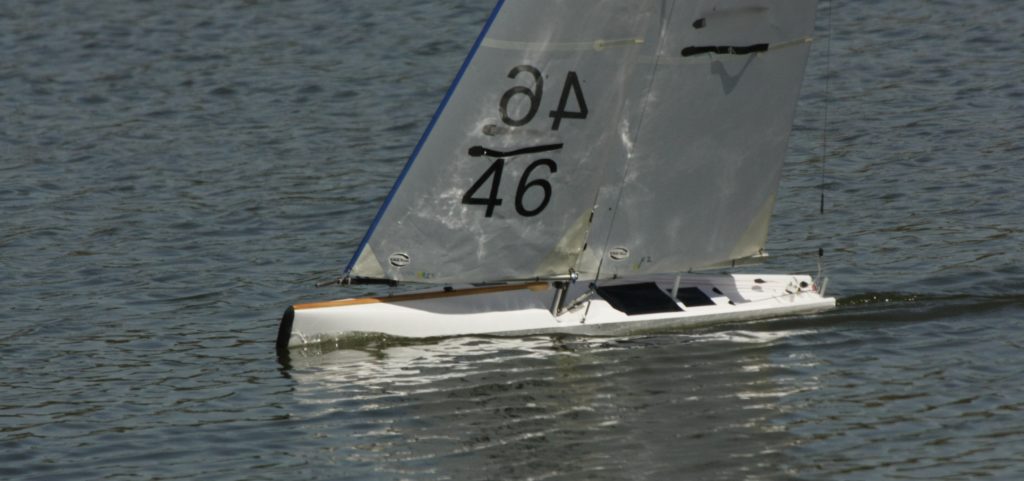
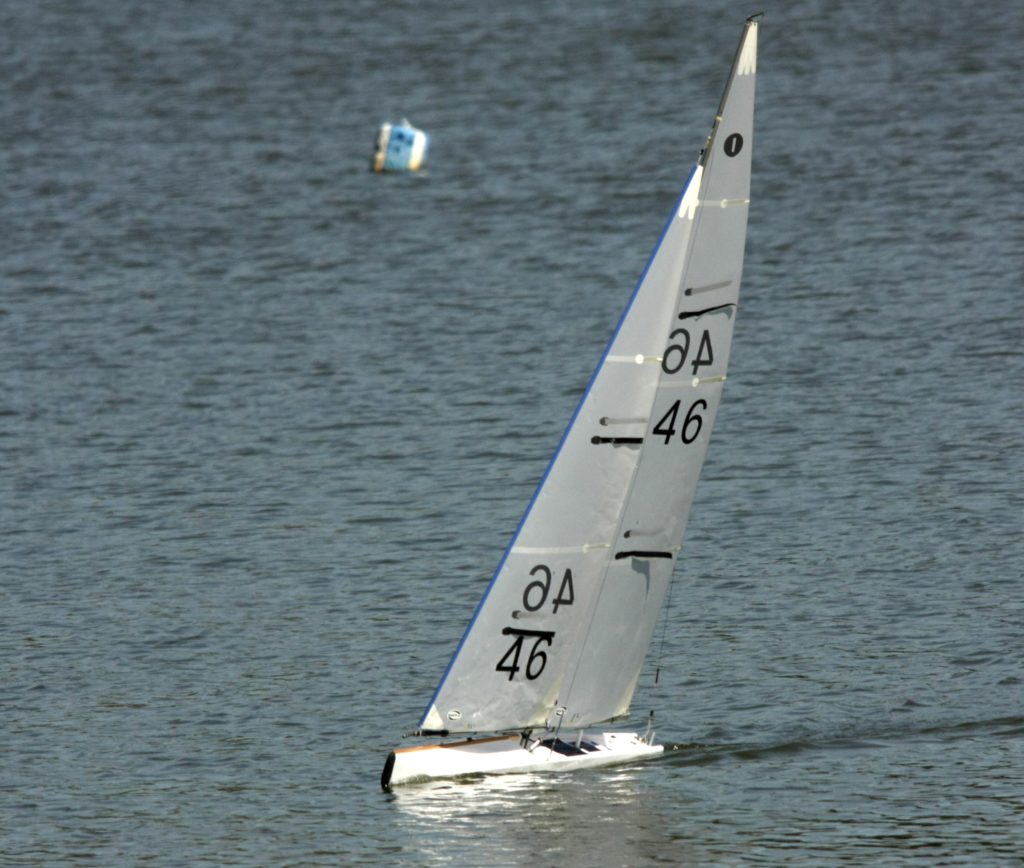
Skiff Prototype V2
This design certainly has possibilities, prototype V1 (white yacht seen above) sailed very well in most conditions at our club pond.
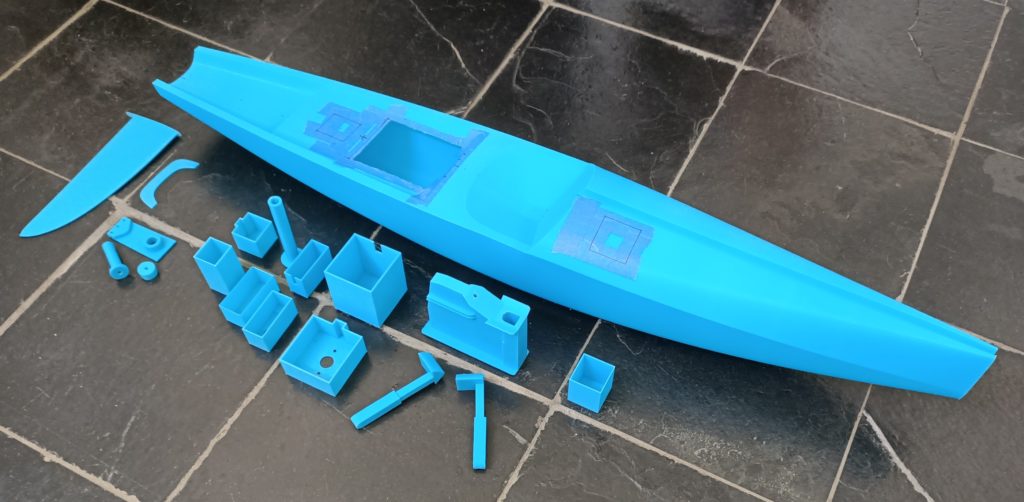
The radical chine with a lower bow to deck line helps spill the water away from the hull without losing too much energy by pushing it sideways unnecessarily. Think about the displacement of water as the boat is healed say at 30 degrees and moving through flat water. If you have a wide foredeck there is good bouyancy up front but the water is turned away at a greater angle, this takes more energy than the water simply being displaced upwards as in this design. Some will disagree, but it is a simple high school science concept centered on mass momentum.
V1 seemed to be doing great up until the short chop appeared on the lake then it appeared to be slicing more into the waves rather than riding up over the top. Bill and I discussed this and he came back with this 20mm wider V2 and some small reshaping but essentially the same. This should get the bow up a tad to get over the short and momentum destroying chop.
There are lessons learnt from the other designs, particularly the Sabre Series, where we were always trying to push the boundaries and often simply made a prototype too skinny. We are always aiming for a competitive allround fast design. Not much use having the fastest light weather yacht when every body leaves you in their spray as the wind rises.
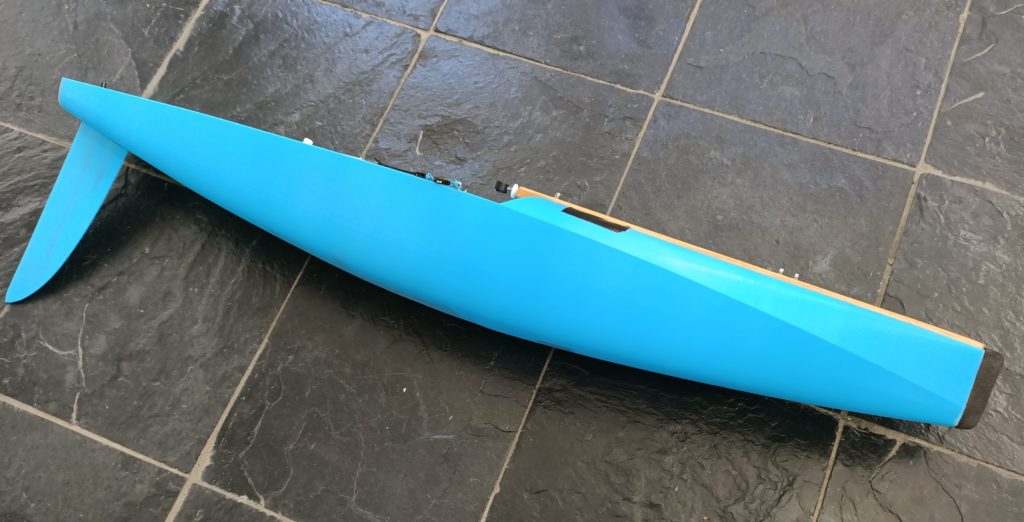
The bow is a derivative of the Banana series which would just keep tracking downwind when knocked down because it got rid of the shovelling and stalling effect of a flat foredeck. The resistance of a flat foredeck causes yachts to trip more, spin around and sit like a wounded duck after the gust. With this design the profile is almost the same top to bottom. As the gust hits, it usually just keeps slicing through the water without tripping even when the rudder lifts out of the water. It all helps when one is on the edge in gusty conditions.
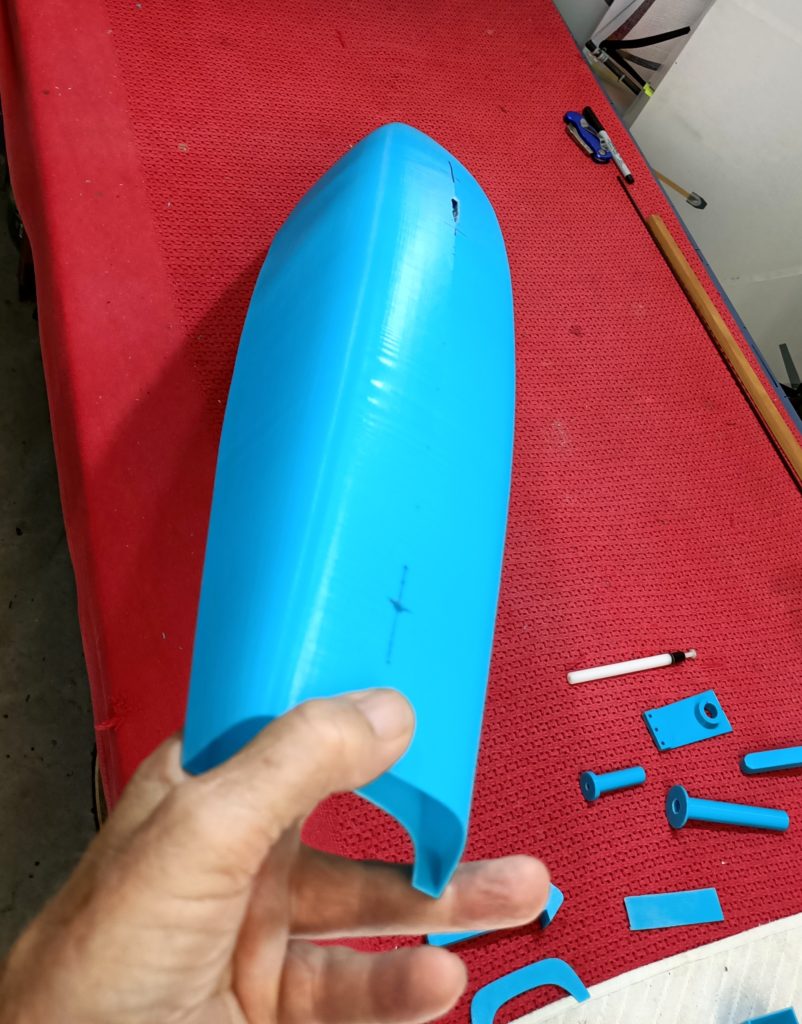
The hull has a soft, squarish U shape profile with a fore/aft rocker open V shape line similar to the 10 Raters.
Again, the story will all be told in the images as it all goes from printing to construction to testing to racing.
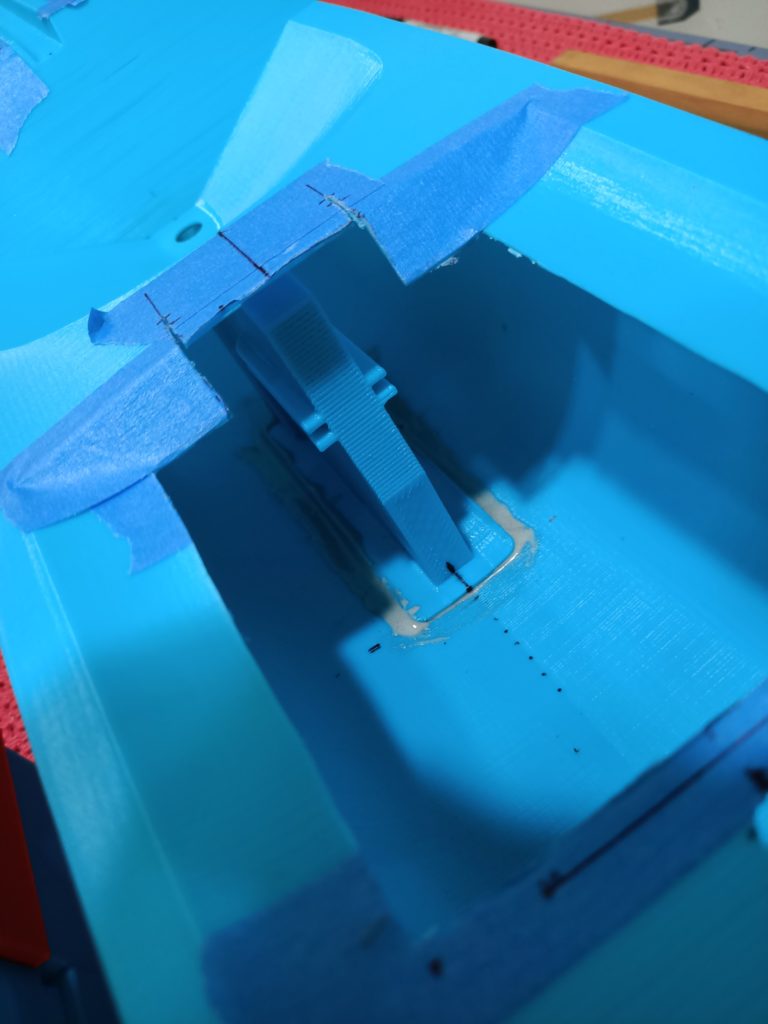
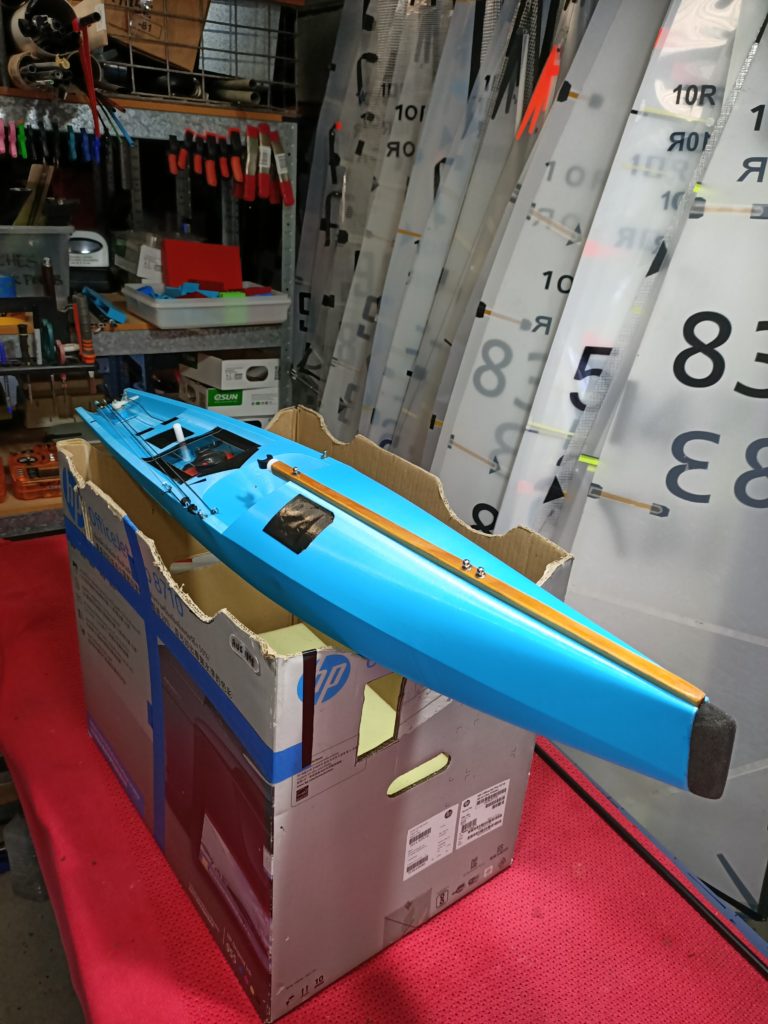
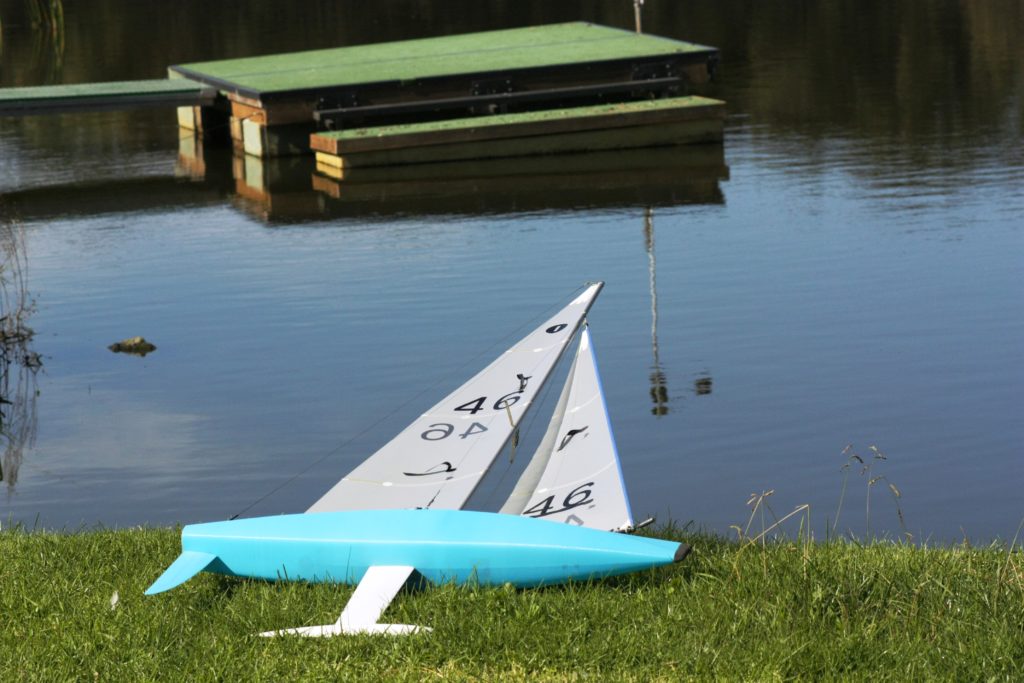
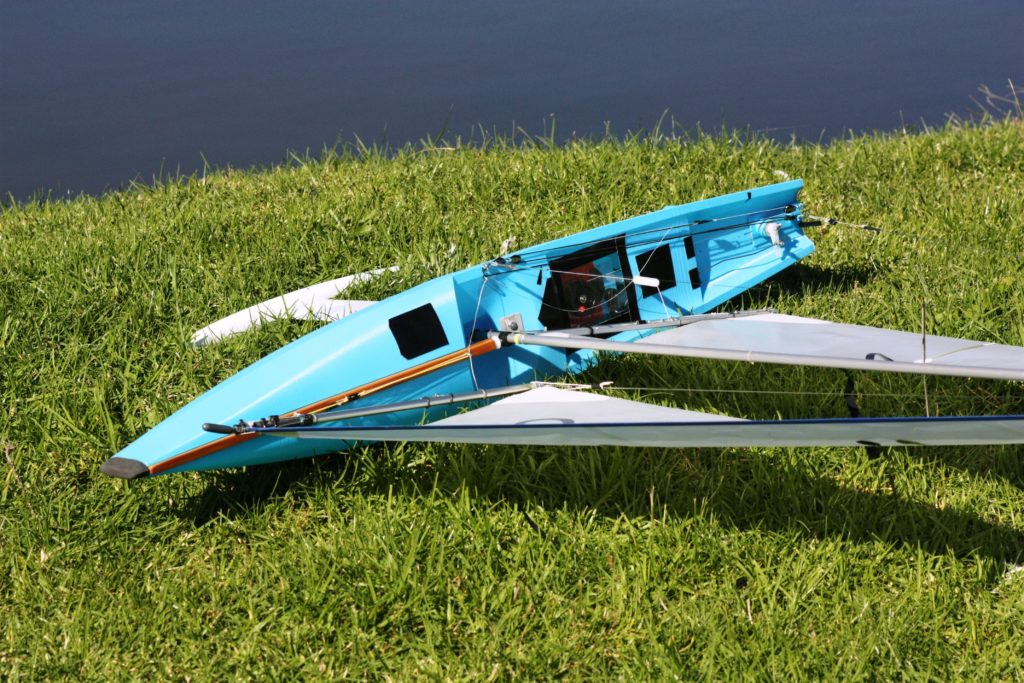
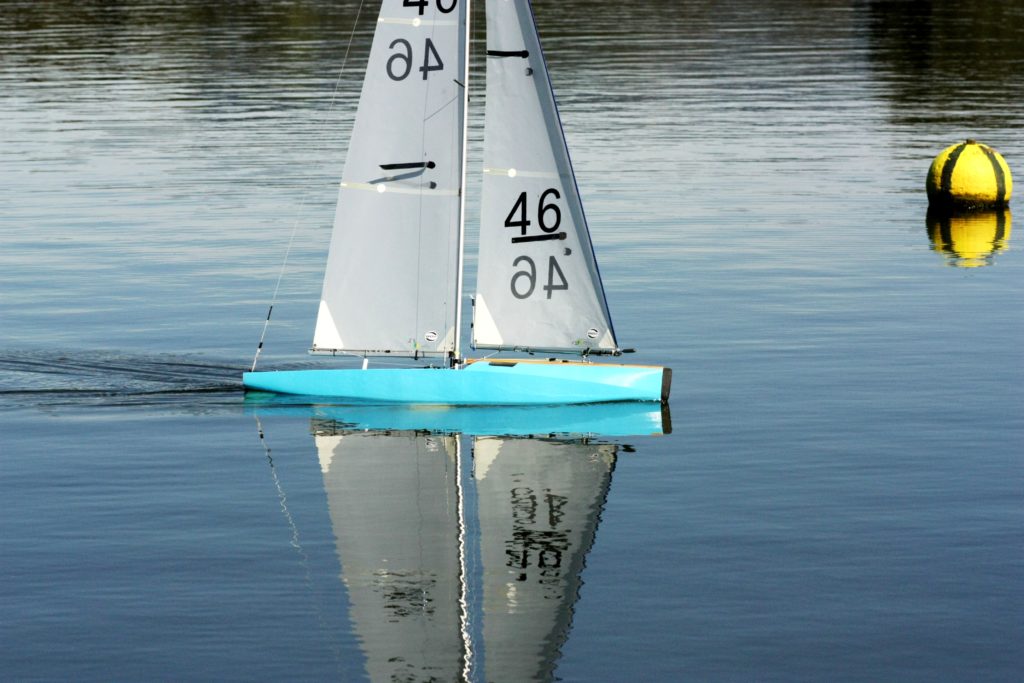
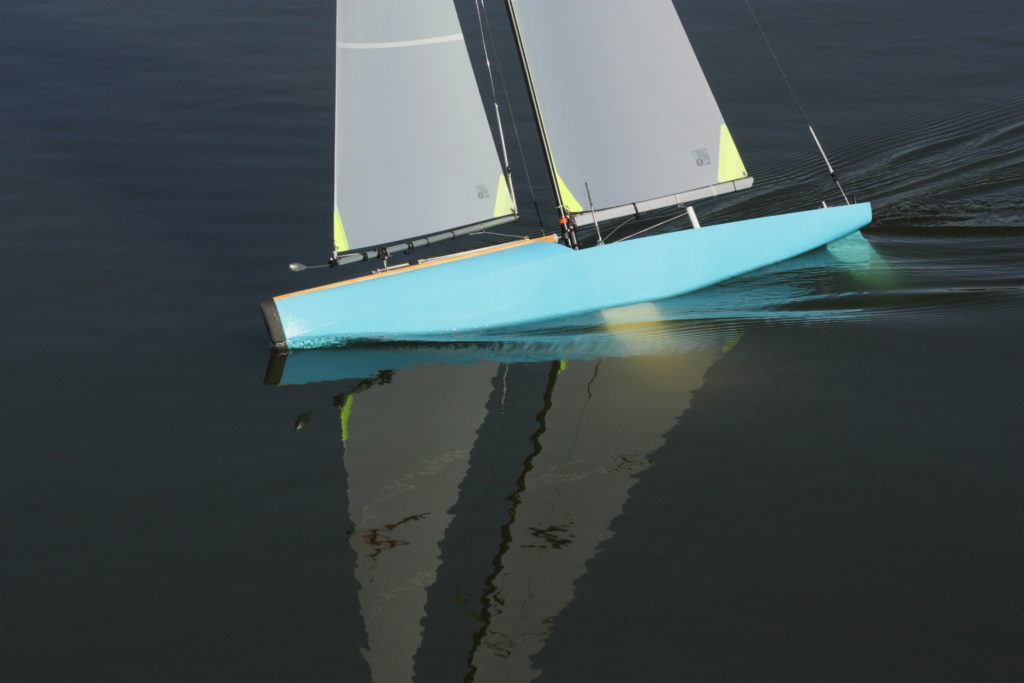
Skiff Prototype V3
From what was learnt with the first two prototypes, V3 was designed and constructed.
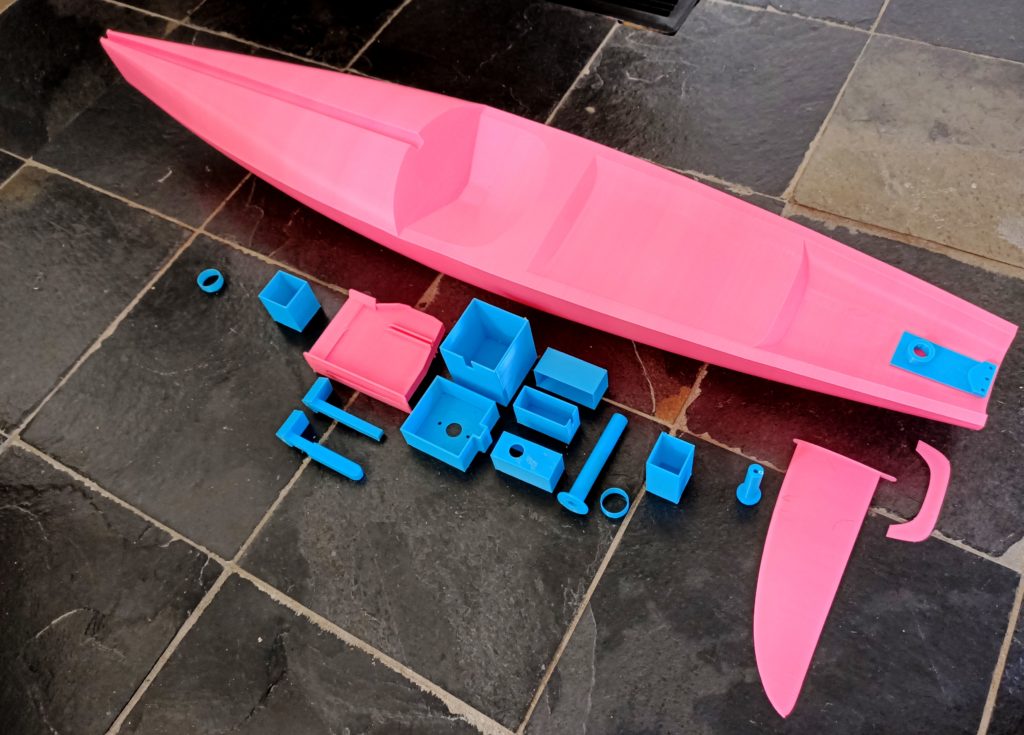
So, what is it about this one?
V2 (the blue one above), was fast from the start and has won many a club race here on the pond at Dunmore in AUS. With Covid restrictions we can only club sail, but fortunately we have a solid and competitive fleet here, making it a good test bed scene for trialing the various designs. It was a bit wider than V1 and showed that one can go too skinny with these IOMs.
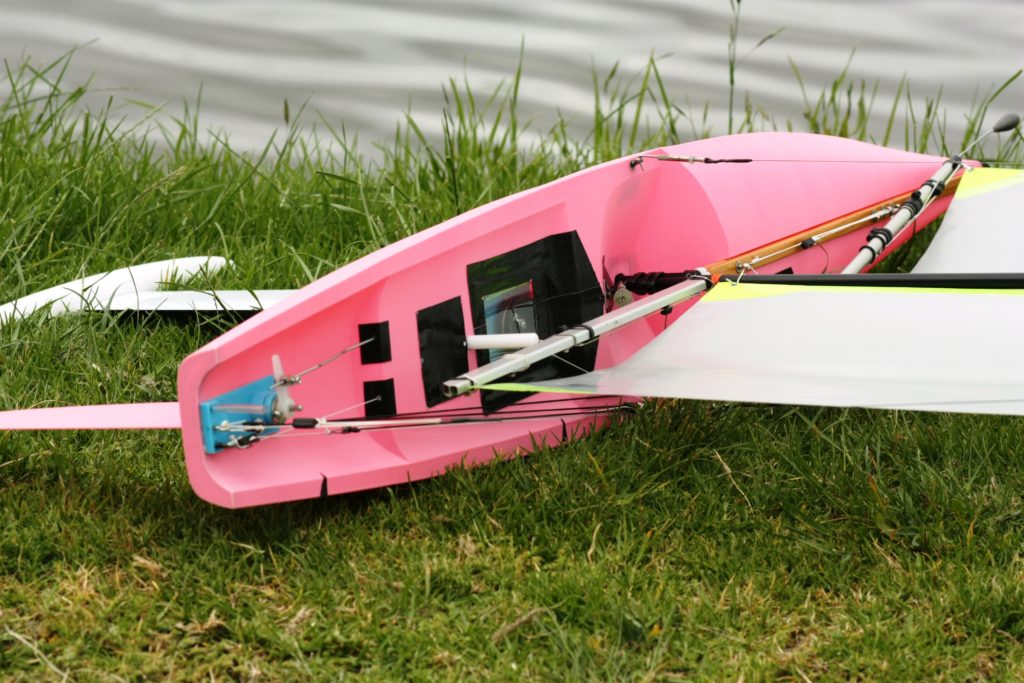
So the question, of course that follows is, how would an even wider version go? This hull is 180mm at the mast, an increase of 20mm on the blue V2.
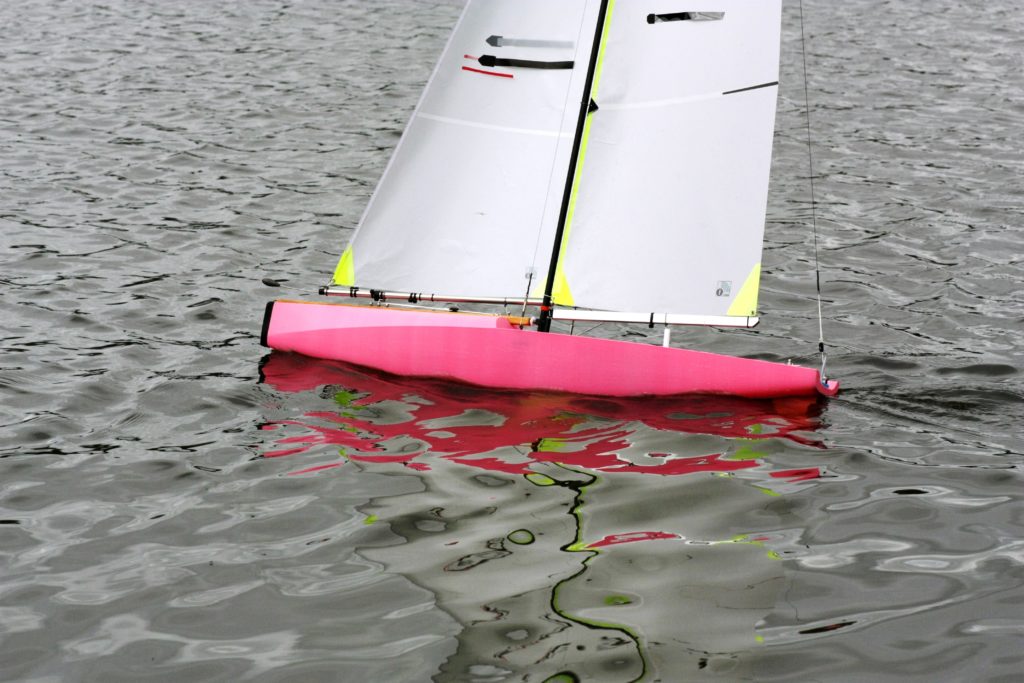
Perceived and predicted advantages included a higher bow up attitude across the often solid short chop we get at the lake and slightly better downwind speed under a reasonable breeze lifting off the relatively flat and now wider hull base.
First race day basically convinced me that this was a correct prediction. V3 appears to be perceptively better in the chop that came through half way through the day and was basically unbeatable downwind with the rising wind. But early days yet, need to directly compare the two versions to be more scientific. Definitely encouraged enough to now register this version, only after one day of racing.
